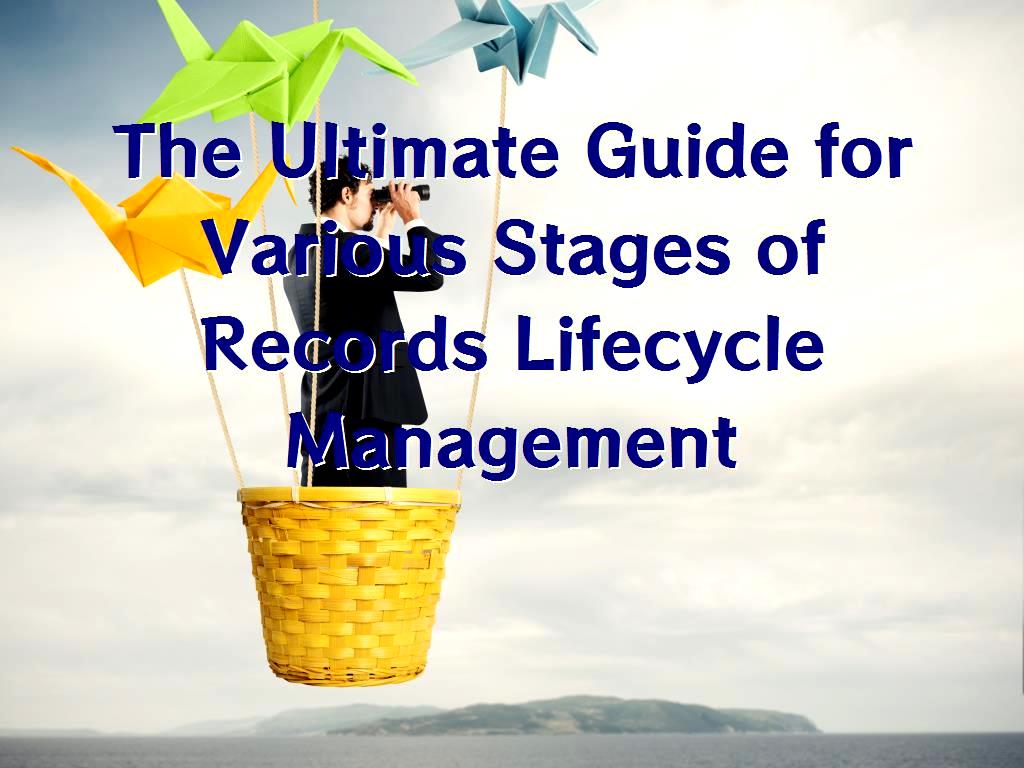The Ultimate Guide for Various Stages of Records Lifecycle Management
4 minute(s) read | Published on: May 06, 2023 Updated on: May 06, 2023 |
Therefore, the organization must effectively manage and govern a record for the duration of its existence throughout the entire process.
Record lifetime is a series of phases that every record must go through to maintain. Receipt or creation, distribution, and disposition are its three main phases. Of course, there are other stages in the procedure. There are specific policies and processes for each stage.
The concept of the records lifecycle management is founded on the idea that while the value of records is constantly changing over time, some documents retain their worth longer than others. For instance, if a form has eternal retention, its value will continue to exist forever. On the other hand, if a document has a four-year retention period, it will no longer be helpful after that time.
The record lifecycle management has aided businesses in managing and maintaining records effectively at various phases, from creation through disposition. Making all the necessary arrangements ensures that the data is easily available when and where it is required. Read this article to learn more about how records management may guarantee the best possible handling and upkeep of your organization's documents.
As noted, a lifecycle corresponds to the steps every record goes through regarding records management. The lifecycle includes everything, from the record's creation through its disposal. Different software, programs, and educational resources can each refer to these phases in another way.
However, they stand out as being fixed and functioning synchronously and reliably. Here is how the record lifecycle management softwares are typically categorized:
1- Creation & Receipt
The initial phase of your organization's records lifecycle is their creation. It refers to the creation or replication of information that has been verified. The receipt or creation of the record marks the beginning of the stage. For instance, you might create a financial report and receive a message in the mail.
Make careful to use the best standard format when creating records. Additionally, make sure the descriptions are accurate, precise, and trustworthy. Each organization has a distinct process for producing documents.
- Email, word documents, excel spreadsheets, etc.
- Within the business model, transactions
- make any MS Office document, such as a Word document, spreadsheet, or presentation.
- Email creation, composition, and transmission
- At this point, every record is operational.

2- Distribution
The second phase of the records life cycle is called "Distribution and Use". A record moves through the stage of dissemination and utilization when it is created or received. Both internal and external distribution are a part of the records life cycle, and both have an effect on the overall firm.
The record must be kept in an accessible location during this phase because it is used frequently. Therefore, according to the retention term, the record must remain for a few hours or years.
3- Retention of records
Business records often have a set retention term. To ensure record accessibility and integrity, these records are categorized according to how long they must be preserved. The enterprise's legal compliance and operational needs are impacted by this.
4- Disposition
The last stage of the records life cycle is disposition, during which the records are destroyed. When the retention time is up, the record's lifespan is finished. Records can be moved to archives or removed when they are no longer needed. Your records management team chooses whether to maintain or delete a history when its lifecycle is complete. You must dispose of the records properly to prevent any problems down the road, whether you destroy them, move them to another organization, or store them.
It mainly involves deleting data from the computerized system and its electronic record pickups. The manual disposal of physical records will take place. The records can be disposed of or destroyed in several ways, including:
- Destruction of the optical disk
- Deleting a digital document
- Destroy paper documents
- Putting stuff in the trash
Therefore, any firm in this era of fast digitization must strategically prioritize having records management. Due to other business priorities and objectives, your company likely needs to find a way to afford to hire full-time personnel for its records management. If your company needs to be in line with the document management regulation criteria but has a restricted amount of storage space, choose outsourcing.
About our Android and iOS app development services